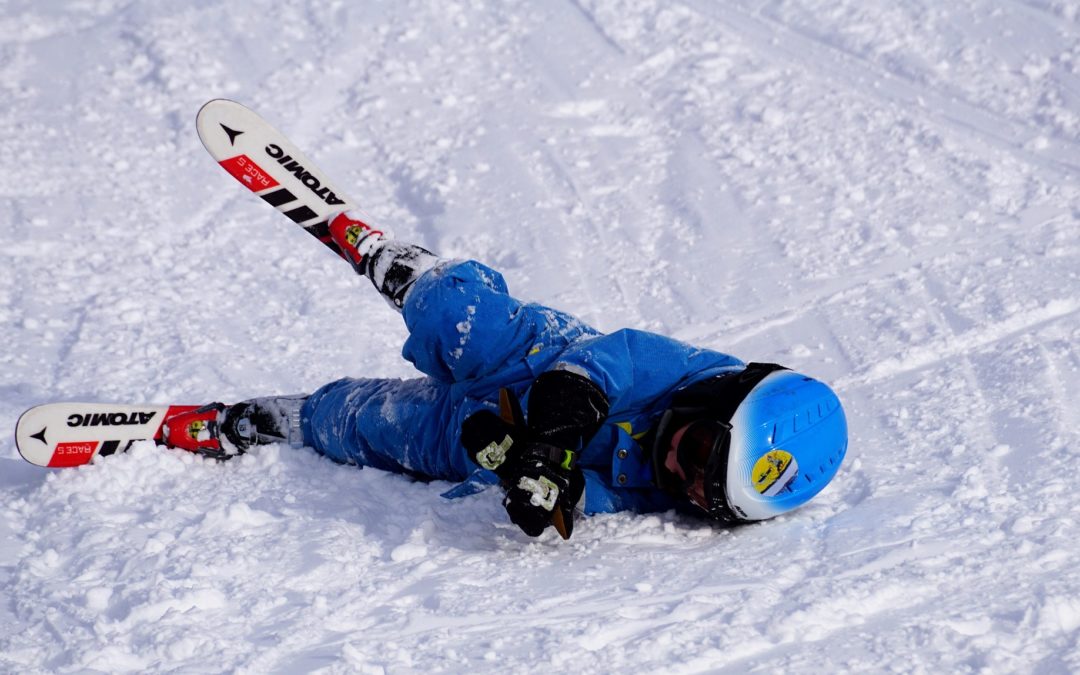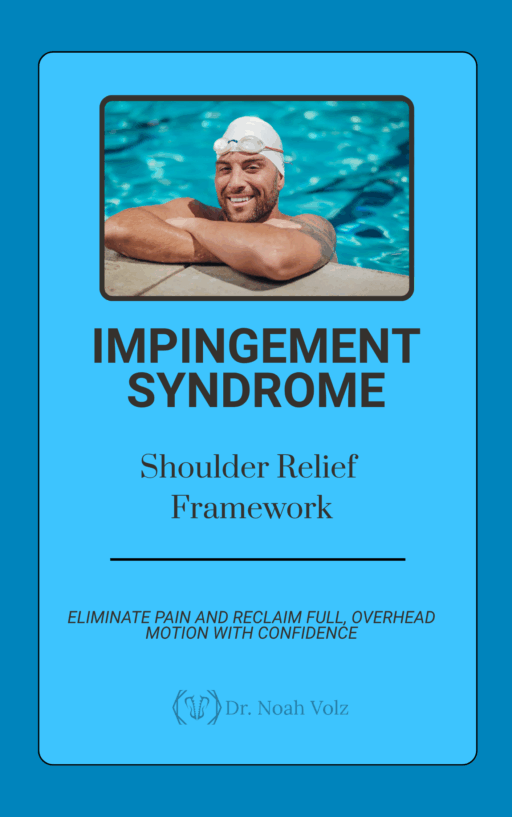Acromioclavicular joint sprain is common in athletes and it is a term that describes damage to one or more of the ligaments that stabilize the acromioclavicular joint. Damage to these stabilizing ligaments leads to pain, instability, and/or separation. (1) Acromioclavicular (AC) joint injuries are the most common type of injuries after a traumatic shoulder injury and must be evaluated to differentiate them from subacromial and glenohumeral problems. (2)
The AC joint is where the collarbone (clavicle) and the acromion process of the shoulder blade meet. The joint is wrapped with four ligaments: superior, inferior, anterior, and posterior AC ligaments. It is also held together by a thin joint capsule. (3) Additional stabilization of the joint is achieved by two coracoclavicular ligaments (conoid and trapezoid), which traverse the gap between the coracoid process and collarbone. All of these ligaments and the acromioclavicular capsule are used to provide stability and defend against shearing forces that could separate the shoulder.
Causes of acromioclavicular joint sprain
Upwards of 40-50% of all athletic shoulder injuries are AC joint injuries. (5) These types of injuries are extremely common in high school and college age athletes who participate in contact sports, such as rugby, hockey, football, and wrestling. (6) These types of injuries become rare after 40 years old and they are five times more likely to happen in males than females.
The most common cause of an AC joint injury is falling onto the shoulder with the arm pulled in to the side or across the body. (7) This direct force to the top of the shoulder rips the ligaments and pulls the acromion downward in relation to the collarbone. The other most common cause of AC joint injury is a fall onto an outstretched hand (FOOSH). (8,9) Falling on an outstretched hand can damage most of the ligaments of the shoulder as well. A less common cause of AC joint sprains are seat belts. The seat belt can compress the shoulder in a motor vehicle accident and cause pain and damage to the joint. (10)
Common symptoms of acromioclavicular joint sprain
All ligamentous sprains are graded as 1-3 and AC joint sprains have a different categorization. The common grading is below:
- Grade 1 (mild strain with no fiber disruption)
- Grade 2 (partial fiber disruption)
- Grade 3 (complete ligamentous rupture)
The AC Joint is graded based on the Rockwood classification:
- Type I – mild, unseparated sprain of the AC ligaments with no disruption of the coracoclavicular ligaments.
- Type II – complete disruption of the AC ligaments with joint separation (less than 4 mm or 40% difference) and sprained but intact coracoclavicular ligaments.
- Type III – complete disruption of AC and coracoclavicular ligaments with joint separation and inferior displacement of the shoulder complex.
- Type IV – complete disruption of AC and coracoclavicular ligaments with posterior displacement of the clavicle through the fibers of the trapezius, and detachment of deltoid and trapezius muscles from the distal clavicle.
- Type V – complete disruption of the AC and coracoclavicular ligaments with significant inferior displacement of the shoulder complex from the clavicle as compared to a typical Type III injury.
- Type VI – complete disruption of the AC and coracoclavicular ligaments, and the clavicle has dislocated inferiorly, below the coracoid process.
Naturally the amount of pain and swelling is much worse with Type VI than it is with Type I. The pain and swelling are usually on the top of the shoulder and it shows up immediately after a traumatic event. (11) For the first day or two the pain is more general and is felt on the trapezius and entire shoulder region but becomes progressively more localized to the AC joint as acute swelling improves. (11) Symptoms will often get worse when you roll onto the affected side at night. There is also pain with moving the arm, especially bringing the arm overhead.
If the injury is more severe there can be bruising and prominence of the collarbone. Pressure applied to the AC joint indicates a 96% chance that the there is a strain. Pressure applied to the collarbone where it meets the acromion may feel like it “gives way” beneath the hand. If the collarbone is prominent, it suggests at least a Type III injury.
How to evaluate acromioclavicular joint sprain
An orthopedic evaluation of the AC joint will include the Cross-body adduction test, the BvR test (98% sensitive), and Paxino’s test (79% sensitive). (12) If there is pain bringing the arm across the body that is a good indication that the AC joint has been injured. If this is done against resistance that is another indication that there is damage to the AC joint.
Sometimes subacromial impingement can be similar to AC joint dysfunction. If this is the case the AC joint differential test (Buchberger test) can help. The chiropractor will lift your straight arm out in front of you with the palm facing down. Then they will lift you straight arm out in front of you with the palm facing up. If there is more pain with the palm up that suggests AC joint involvement.
X-rays of the shoulder are important when there is significant trauma or the collarbone is displaced. The detail provided by an MRI is often unnecessary for the assessment of AC joint injuries, although an MRI may be appropriate for differentiation of rotator cuff lesions. (13)
Upper cervical chiropractic for acromioclavicular joint sprain
The average amount of time needed to rest the AC joint is 18 days. Grade I & II injuries can be managed non-operatively by first protecting and immobilizing the joint. Wearing a sling for 3-10 days may be necessary. Once symptoms are manageable then focus on mobility and strengthening. (14)
After protection and immobilization start doing passive mobility exercises until full active ROM can be achieved with limited pain. Minimize movements such as behind the back internal rotation, cross-body reaching, and bringing the arm overhead. (15) If after three months there is not a return of full range of motion then an alternative diagnosis is likely.
After there is increased mobility strengthening can be used to increase the dynamic stability of the AC joint. This will allow the patient to return to their prior level of activity. Strength training begins with scapular stabilization exercises, progressing to isotonic strengthening, and eventually sport-specific training.
The AC joint is a “keystone” link for coordinated movement of the shoulder girdle. (16) Bringing the arm up requires the collarbone to raise up 30-40 degrees. Without this movement there is a high likelihood of impingement, rotator cuff strain, or instability. (17)
Surgery is almost never the answer for Type III injuries of the AC joint. Over 80% of orthopedic programs opt for conservative management of Grade 3-type injuries. This is probably due to the potential complications associated with surgery. (18)
Chiropractic adjustments can be used in the mobility phase of care. Providing additional movement to the joints that need it most. On average conservative care will last for about six weeks. If there is no improvement then surgical consultation can be considered. (19) The most common surgery is open or arthroscopic distal clavicular resection. (20)
Exercises to help heal acromioclavicular joint sprain
Conclusion
If acromioclavicular joint sprain of the shoulder is a common part of your life and you are looking for an answer then I can help. I can help figure out what the cause of the shoulder pain is. Use chiropractic adjustments and massage to get you out of pain and teach you the exercises you will need in order to build a resilient shoulder that is immune to pain. If you are ready to try this approach schedule with me today. Still looking for more information? Check out my eBook on Chronic Neck Pain.
References
- Rockwood CA, Green DP, eds. Injuries to the acromioclavicular joint. Fractures in Adults. Philadelphia, Pa: JB Lippincott; 1984:860-91.
- Buttaci CJ et, al. Osteoarthritis of the Acromioclavicular Joint A Review of Anatomy, Biomechanics, Diagnosis, and Treatment Am J Phys Med Rehabil 2004;83:791–797.
- Seade LE Acromioclavicular Joint Injury. emedicine.medscape.com Accessed 3/15/14.
- Nissen CW, Chatterjee A. Type III acromioclavicular separation: results of a recent survey on its management. Am J Orthop 2007;36(2):89–93.
- The Brigham and Women’s Hospital. Standard of Care: Acromioclavicular Joint Separation. The Brigham and Women’s Hospital, Inc. Department of Rehabilitation Services. 2007. Accessed 3/14/22 www.brighamandwomens.org
- Pallis et al. Epidemiology of Acromioclavicular Joint Injury in Young Athletes. Am J Sports Med September 2012 vol. 40 no. 9 2072-2077
- Rockwood CA, Green DP, eds. Injuries to the acromioclavicular joint. Fractures in Adults. Philadelphia, Pa: JB Lippincott; 1984:860-91.
- Macdonald PB, Lapointe P. Acromioclavicular and sternoclavicular joint injuries. Orthop Clin North Am. Oct 2008;39(4):535-45.
- Shaffer BS. Painful conditions of the acromioclavicular joint. J Am Acad Orthop Surg. May-Jun 1999;7(3):176-88.
- Liz Saunders Acromioclavicular Joint Sprain and its Prevalence with Whiplash Injuries Physiotherapy Volume 87, Issue 11 , Pages 587-592, November 200
- Magee DJ. Orthopedic Physical Assessment. 3rd ed. Philadelphia: W.B. Saunders; 1997.
- van Riet RP1, Bell SN. Clinical evaluation of acromioclavicular joint pathology: sensitivity of a new test. J Shoulder Elbow Surg. 2011 Jan;20(1):73-6.
- Nemec U, Oberleitner G, Nemec SF, Gruber M, Weber M, Czerny C, et al. MRI versus radiography of acromioclavicular joint dislocation. AJR Am J Roentgenol. Oct 2011;197(4):968-73.
- Gladstone J, Wilk K, Andrews J. Nonoperative treatment of acromioclavicular joint injuries. Oper Tech Sports Med 1997;5:78–87
- Cote MP, Wojcik KE,et al. Rehabilitation of Acromioclavicular Joint Separations: Operative and Nonoperative Considerations. Clin Sports Med 29 (2010) 213–228
- J. A. Fraser-Moodie, N. L. Shortt, C. M. Robinson Injuries to the acromioclavicular joint. J Bone Joint Surg [Br] 2008;90-B:697-707.
- Cohen BS, Romeo AA, Bach Jr BR. Shoulder injuries. In: Brotzman SB, Wilk KE, eds. Clinical Orthopaedic Rehabilitation. 2nd ed. Mosby; 2003:125-143.
- Ceccarelli E, Bondi` R, Alviti F, et al. Treatment of acute grade III acromioclavicular dislocation: a lack of evidence. J Orthop Traumatol 2008;9(2):105–8
- Guntur E Luis, Chee-Khuen Yong, Deepak A Singh, S Sengupta and David SK Choon Acromioclavicular joint dislocation: a comparative biomechanical study of the palmaris-longus tendon graft reconstruction with other augmentative methods in cadaveric models Journal of Orthopaedic Surgery and Research 2007, 2:22.
- Buttaci CJ et, al. Osteoarthritis of the Acromioclavicular Joint A Review of Anatomy, Biomechanics, Diagnosis, and Treatment Am J Phys Med Rehabil 2004;83:791–797.
-

Bicep Tendon Pain Solution
$50.00 -

Brain Detoxification & Recovery System
$50.00 -

Brain Energy and Endurance Support System
$50.00 -

Brain-Based Movement and Motor Control Training
$50.00 -

Centralized Low Back Pain
$50.00 -

Cervical Radiculopathy: Neck and Nerve Relief Pathway
$50.00 -

Complex Low Back Pain
$50.00 -

Complex Radiating Low Back Pain
$50.00 -

Cross-Pattern Low Back Pain
$50.00 -

Frozen Shoulder Mobility Reset Plan
$50.00 -

Impingement Syndrome: Shoulder Relief Framework
$50.00 -

Mastering Brain Senses: Rebuild Your Hearing, Vision, and Body Awareness
$50.00













